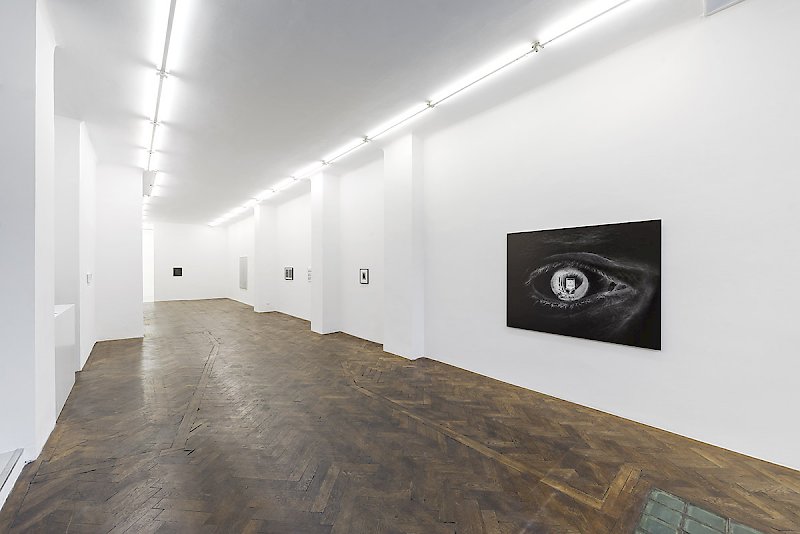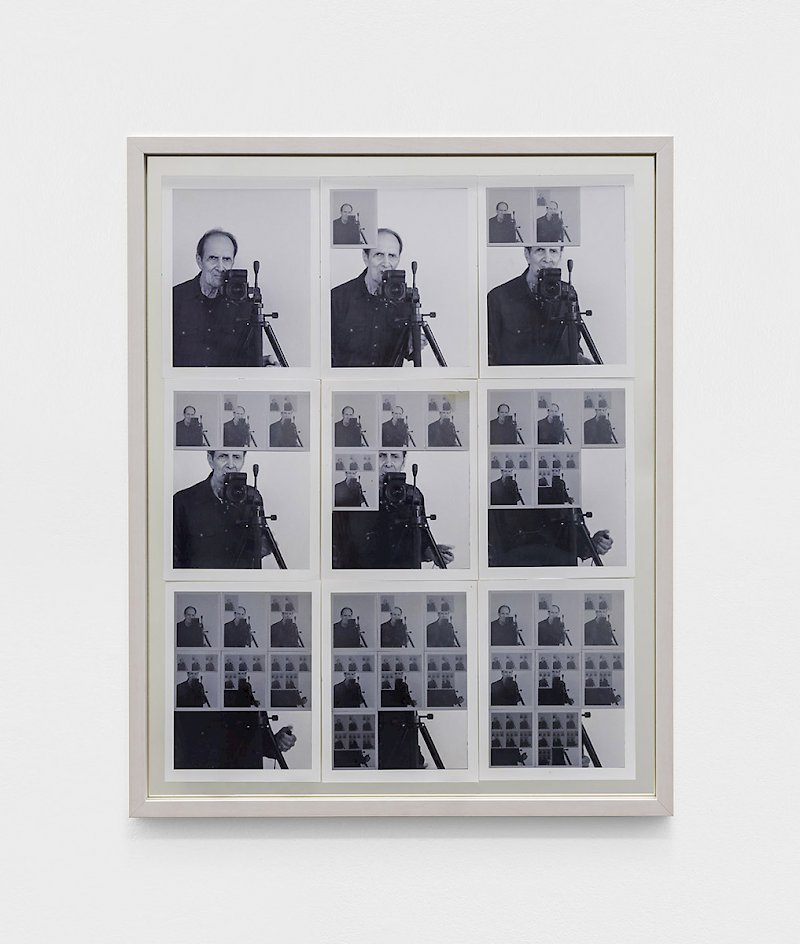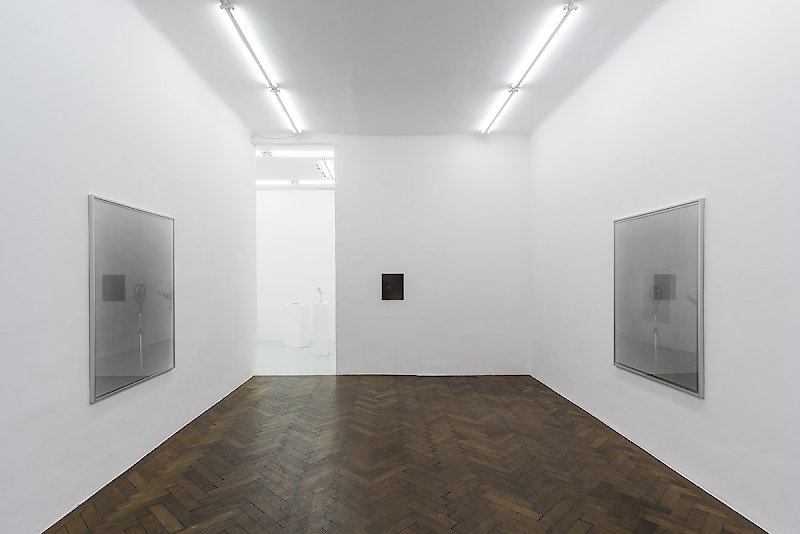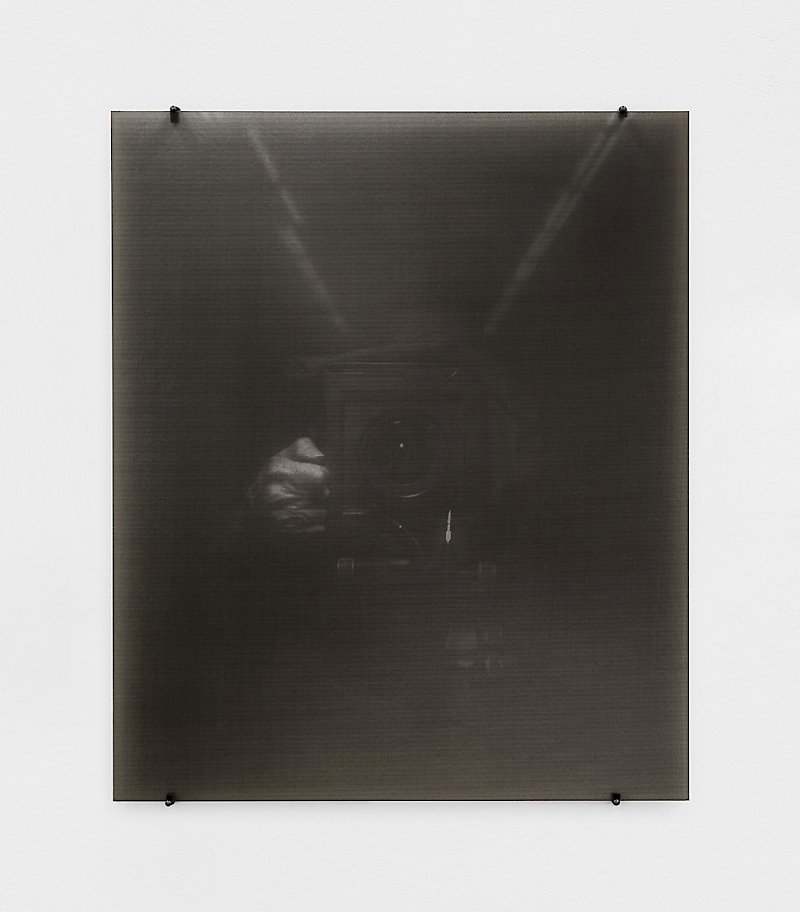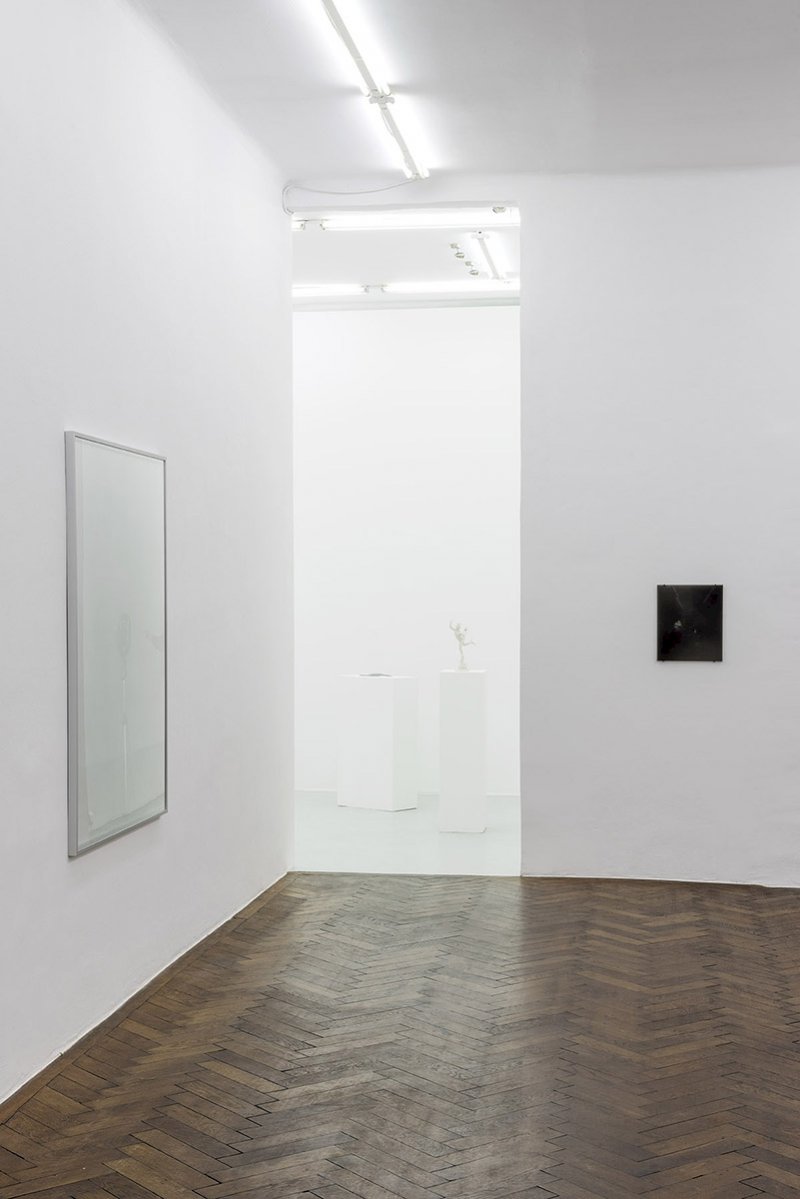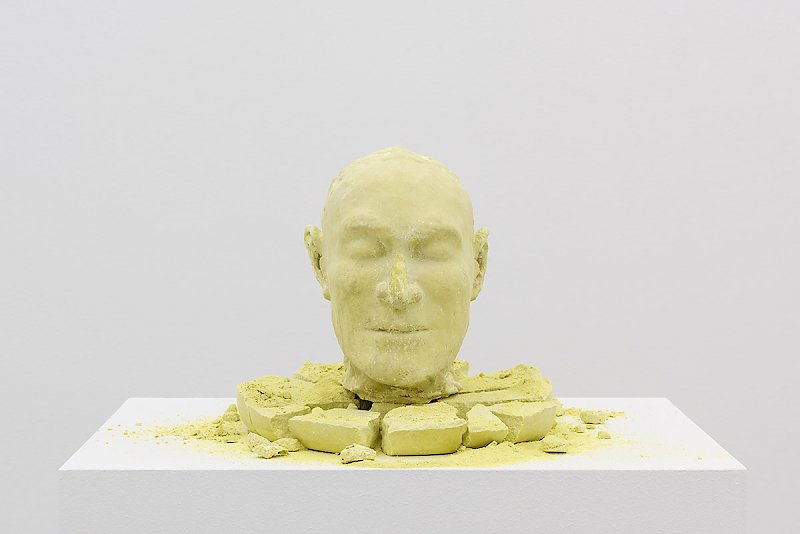WILLIAM ANASTASI. INCIDENTS AND COINCIDENTS: 60s and 70s Photographs in Which the Camera is the Subject.
DOVE BRADSHAW. ELEMENTS: THE DEVIL IS ON THE EARTH. Sculptures made from elements on the Periodic Chart.
Galerie Hubert Winter presents a very specific selection of photographs by Anastasi and objects by Bradshaw that are subtly choreographed by Dove Bradshaw. They comprise an analysis of the consequences of freedom, contingency, automatism. Even though Anastasi and Bradshaw use apparently different languages and seemingly deal with different topics, they build—via their contact points—a common ground. The investigation of absolute simplicity without any kind of illusionism characterize both the works of William Anastasi (b.1933, Philadelphia) and Dove Bradshaw (b. 1949, New York where they work and live together since 1974). The works presented in the exhibition explore at once the possibilities/impossibilities of representation, of both construction and destruction of images and narratives.
“At the center of Anastasi’s presentation is the foundational idea that originated in his 1966 Six Sites, photo-silkscreen ten percent reductions of the visual signals on the walls upon which the works are hung. Thus the site itself was introduced as the subject of the exhibition. A related idea from 1967 and 1968 involved the reflective nature of a retina, a mirror and a photograph in its glass or Plexiglas mounting. For the two in situ works here, hung and lit where and how they were made, the real reflections superimpose onto the photographed reflections when the viewer aligns himself where the camera stood with one eye closed. In 1968 and continuing a decade later Anastasi’s focus was directed to the camera itself: However this is his first exhibition in which the camera is the subject of the photograph. Anastasi embraces the whole discussion on the validity of photography, on its artistic and/or documentary value, on representation, on the tradition of portrait (photographs, reflections, shadows and cameras impede a proper representation), and more broadly on the act of seeing. For instance including the reflection on glass/Plexiglas, something one tunes out in order to see an image, Anastasi does what artists do, he brings awareness and enjoyment to the habitually unseen, the unnoticed. At the same time he both questions and reinforces the documentary value of photography. While on the one hand he shows the device itself and refers to its plain being and functioning as a mirror that can both reveal and progressively conceal; on the other he reaffirms its proof value, the here and now by re-producing his works in situ, hence stating the actual happening of a certain moment of existence under certain circumstances. Thus, reproduction is at stake, together with the performative aspect of re-enactment and contingency.
My practice touches on similar topics while using different tools. Selecting six elements on the Periodic Chart– lead, silver, gold, arsenic, sulfur, mercury–each is connected respectively to a particular conundrum, a fairy tale or a myth. They are represented in realistic forms as common objects, a feather, a bullet, an egg, an apple, a bust and a figure. Perhaps the viewer is then led through diverse pure elements and objects in a kind of mythological travel, between heaven–or the lost paradise through the Eden Myth, a cast of an apple covered by apple seeds– and hell via Lucifer, a life size bust of Anastasi which was formed in plasticine and then cast into sulfur. C. G. Jung defined sulfur to be not only the soul of “metals” but the one of all living things. The idea of a journey between life (the golden egg Nothing) and death (Spent Bullets) is also introduced by a small statue of Mercury, the god of travel, currency and thieves, whose caduceus, the medical symbol he carries with the double snakes and winged finial wraps around a mercury thermometer fabricated in a laboratory. Often I use unstable substances intended to change, however here they are meant to be immutable. The chosen elements have become subjects, words, materials that tautologically refer to themselves as they simply are. On the contrary, existing as part of an infinite game of cross-references, hopefully they can create endless, mirrored and mirroring cosmos. ‘[…] there is not an all, given all at once: there is a finite number of elements whose combinations are multiplied to billions of billions […]’ Italo Calvino. The Castle of Crossed Destinies”
Text by Dove Bradshaw


